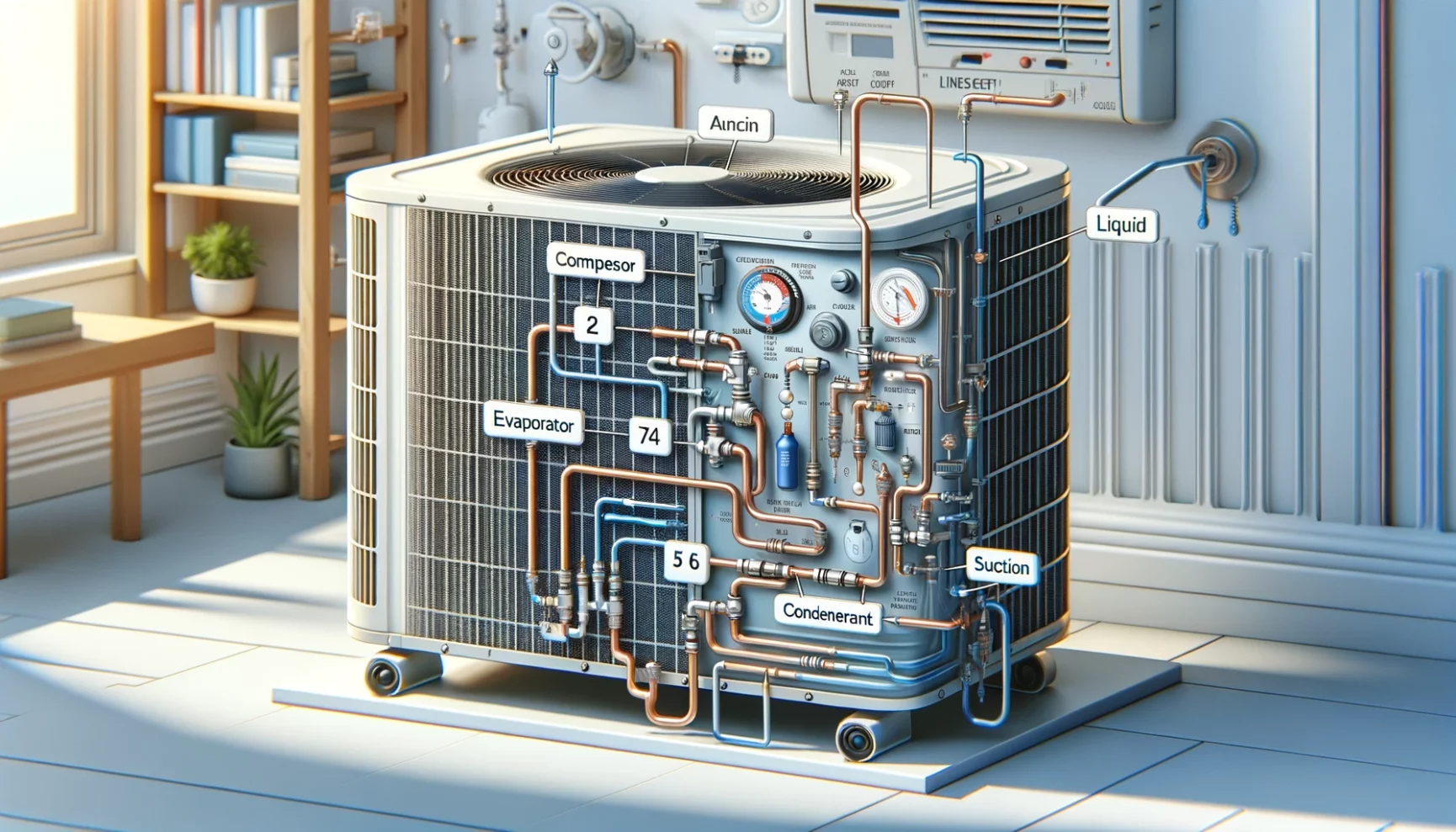When choosing components for heating, ventilation, and air conditioning (HVAC) systems, many people focus on the visible equipment like compressors, condensers, or air handlers. However, the hidden parts of a system are just as crucial to long-term performance and efficiency. Line sets, which connect indoor and outdoor units, play a defining role in system reliability and overall energy output. A durable and well-designed line set ensures the smooth transfer of refrigerant, reduces energy loss, and contributes to fewer service calls over the lifespan of a unit. We will explore how line sets manufactured embody performance-focused engineering and why they stand as a long-term investment in both residential and commercial HVAC applications.
The Role of Line Sets in System Integrity
Line sets may appear simple compared to the larger machinery in HVAC systems, but their role in maintaining system integrity is profound. They transport refrigerant between the evaporator coil inside and the condenser unit outside, ensuring the heating and cooling cycles function seamlessly. Poor-quality line sets or those not installed correctly can lead to inefficiencies, leaks, and reduced performance over time. A compromised line set not only affects the system’s ability to regulate indoor climate but also drives up energy costs and creates the need for premature repairs.
By contrast, a carefully manufactured line set delivers consistent pressure and flow, minimizes the chances of leaks, and maintains stable operating conditions. When selecting a system component that quietly works in the background but directly impacts the entire unit, line sets deserve serious attention. Their reliability can mean the difference between years of uninterrupted performance and recurring maintenance issues.
Materials and Construction That Withstand Demands
The durability of a line set depends greatly on the materials used in its construction. Inferior metals can corrode, weaken under pressure, or break down faster, especially when exposed to environmental factors like heat, humidity, or pollutants. HVAC line sets are designed with long-term durability in mind, using premium-grade copper tubing and protective insulation that resists wear and tear. This ensures that the refrigerant remains safely contained while the system endures varying climates and conditions.
High-quality insulation is especially crucial, as it prevents thermal loss during refrigerant transfer, which otherwise compromises efficiency. By investing in a line set built with robust materials, system owners can trust that their HVAC units will deliver consistent results over extended lifespans. The design considerations extend beyond just durability; they also account for flexibility during installation, making them adaptable to different layouts without losing structural strength. This combination of strength and adaptability positions them as components built to endure.
Energy Efficiency Through Precision Engineering
Energy efficiency has become a top priority for property owners and facility managers, not only for environmental reasons but also to reduce operational costs. Line sets that leak refrigerant, allow thermal loss, or create irregular pressure can severely undermine energy efficiency. Even if a high-efficiency unit is installed, its potential is wasted if the line set is substandard. AD Engineering designs its line sets to work in harmony with modern energy-efficient systems.
Through precision engineering, these line sets ensure smooth refrigerant flow, proper insulation, and reduced energy losses during operation. This translates into fewer fluctuations in indoor temperatures, reduced workload on compressors, and an overall decrease in energy consumption. For businesses or homeowners, the investment pays off in lower monthly bills and a system that consistently performs at its rated efficiency. Over time, the savings add up significantly, turning line sets into an asset that supports sustainable energy use.
Reducing Long-Term Maintenance and Downtime
Maintenance is an inevitable part of managing HVAC systems, but the frequency and severity of repairs can often be traced back to the quality of the components. A low-grade line set is more likely to crack, corrode, or cause leaks that demand costly repairs or replacements. This not only drives up expenses but also results in downtime, which is especially disruptive for commercial spaces where comfort directly impacts productivity.
By contrast, a robust line set engineered for durability reduces the chances of such issues, meaning fewer service calls and less inconvenience. AD Engineering’s line sets are designed with resilience in mind, providing long-term reliability that system owners can depend on. The peace of mind that comes with knowing a critical system component is built to last cannot be overstated. In many cases, the long-term savings on maintenance costs alone justify the initial investment in a higher-quality line set.
Enhancing System Lifespan and Performance
An HVAC system’s longevity is influenced by how well its parts interact and perform together. Strain caused by leaks, poor insulation, or inconsistent refrigerant flow forces other components like compressors and coils to work harder than necessary. This added stress shortens the overall system lifespan. A well-engineered line set protects against these issues by maintaining consistent refrigerant delivery and protecting system integrity. For property owners, this means fewer premature replacements and a system that reaches, or even exceeds, its expected service life. AD Engineering’s line sets are designed to contribute directly to this outcome, extending the overall value of HVAC investments. By focusing on both performance and protection, these line sets support a system that operates smoothly year after year. In practical terms, this also translates into a quieter system, more stable indoor temperatures, and a reduced risk of sudden breakdowns during peak demand periods.
By investing in higher-quality line sets, property owners secure better efficiency, lower costs, and a longer lifespan for their systems. These benefits extend far beyond the installation date, making line sets not just a component but a foundation for reliable performance. The decision to choose well-designed line sets ultimately reflects a commitment to long-term comfort, cost savings, and sustainability in both residential and commercial settings.


